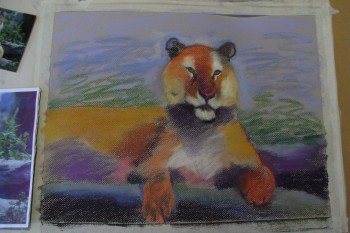Surfaces for Pastel Painting
Pastel Art Tutorials
Surfaces for Pastel Painting

In this section, we are going to talk about the different surfaces you can use to paint with pastels on.
While most pastel artists will use paper as their surface of choice, it’s perfectly possible to use pastels on other surfaces, such as archival textured panels or fine sandpaper.
Whatever surface you may use, its most important characteristic will be the ‘tooth.’
Tooth refers to how well a surface holds pigment.
More abrasive surfaces hold more pigment than less abrasive surfaces, which is why sandpaper, which may seem like an odd choice, can actually work quite well – as it has a lot of tooth.
One tip here is that the grittier the tooth, the more pastel you will use, so if you are using a really soft pastel you will find that you will go through the sticks a lot quicker.
The grittier the texture the less likely you are to use the smudging technique (as it’s not so finger friendly) and concentrate more on the hatching method.
By the way, if you do go with sandpaper – we suggest the really fine type.
As far as paper is concerned, you only have to walk into an art supply store or do a search online and you’ll find that it’s available in a huge variety of tints and sizes.
Size is strictly a personal choice, but tint is something that will affect your work. It would be wise for example to choose a paper tint that is sympathetic to the overall look of the painting you want to create.
The paper’s own colour and texture will then serve to complement and subtly unify your picture.
There is a very good illustration in the book ‘Pastel Painting Secrets’ of how the tint of the paper can change the colour of the pastel. It’s quite dramatic…
Click here for more info.
In the ‘Step by Step’ books, the artist shows you exactly what paper she is using and she makes sure that it is inexpensive. In fact, the whole idea of these books is that they are for artists, like you, who are really at the beginning of their pastel adventure. Rest assured, that costs are kept to a minimum.
In our next module, we get into more detail and explore some specific techniques – no doubt this is something you have been looking forward to.
